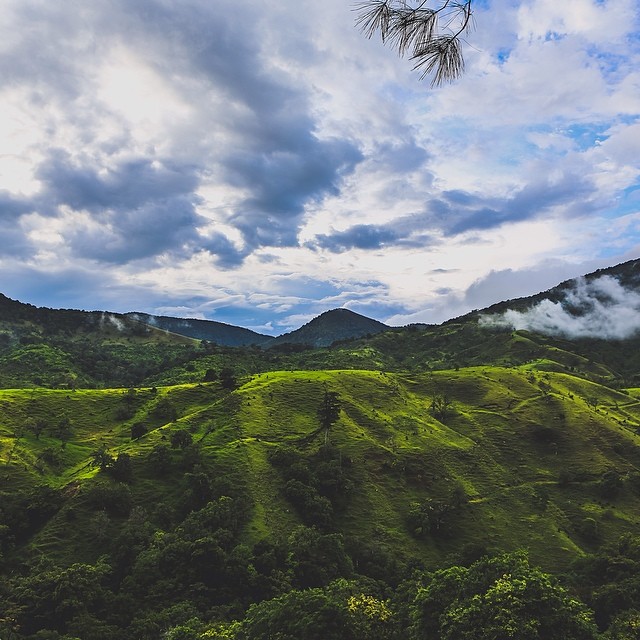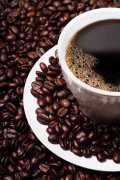Discussion on the brewing method and technology of fine coffee
The term "fine coffee" was first put forward by Ms. Knudsen of the United States in Coffee and Tea magazine. At that time, Ms. Knudsen, as a coffee buyer of B.C. Ireland in San Francisco, was very dissatisfied with the neglect of the quality of raw coffee in the industry, and even some big roasters mixed a large amount of Robesda beans in the comprehensive beans, so she put forward the concept of fine coffee to advocate the improvement of the quality of the industry. This term is used to describe coffee beans with distinctive flavor characteristics that grow in a special environment. Its use in international coffee conferences makes it spread rapidly.
In fact, according to Ms. Knudsen, people started drinking fine coffee, but later, due to the growing demand for coffee, the discovery and use of new coffee varieties led to the decline of coffee quality. later, people even began to dislike this bad coffee and began to turn to other drinks. In this case, Ms. Knudsen re-made people realize the value of boutique coffee, which led to a boutique coffee boom. In the United States, there are enterprises and stores in pursuit of boutique coffee represented by Starbucks. The market for boutique coffee is also growing. In the 1990s, with the rapid increase of boutique coffee retailers and cafes, boutique coffee has become one of the fastest growing markets in the catering service industry, reaching $12.5 billion in the United States alone in 2007. Now boutique coffee has become the fastest growing coffee market. Coffee producing and importing countries around the world are aware of the great potential of the boutique coffee market, and continue to make efforts to the production and production of boutique coffee.
I think the specific way to start this discussion is to review the potential taste of coffee that we have emphasized in the past. Most of the existing cup scoring tables are evaluating raw coffee beans, but here our scoring criteria should be out of this purpose. therefore, we take the following common characteristics into consideration:
1. Sweetness 2. Acidity 3. Taste 4. Sense of balance 5. Aroma 6. Flavor 7. Yu Yun
In the process of brewing coffee, what we should think about is the impact of the whole brewing process on the above characteristics, and how we can influence the above factors through equipment and brewing skills. Of course, this is a very difficult question, because these traits are closely related and interlinked. But most of the above characteristics can be linked to the concept of "extraction". Of course, the coffee bean itself must be a decisive factor in the available sweetness or good acid in coffee, but in brewing, the quality and degree of sweetness or acidity are determined by the so-called "extraction".
Extraction has always been a thorny issue, but I believe that consistent extraction is very important. You might think that the degree of extraction is closely related to the particle size distribution of bean grinders and coffee powder. But in fact, no matter what degree of extraction you set, we will be affected by some factors when brewing, and there is a deep relationship between the two: the particle size of coffee powder and the contact time between coffee powder and water. The particle size of coffee powder affects the surface area of coffee powder in contact with water, thus determining the dissolved matter and extraction rate in coffee, regardless of the brewing method. It is necessary to strike a balance between the grinding particle size of coffee powder and the contact time of coffee powder in water. To put it simply, if you use a French filter kettle to make coffee, we can try it with a variety of grinding thickness. as long as the contact time between water and powder is properly controlled, you can get a good cup of coffee.
What you might think about at this moment is that the so-called "right cooking time" hedges the effect of cooking temperature. If the coffee powder particles are ground very coarsely, then the soaking time in the French filter kettle will be relatively longer, so will the average cooking temperature be pulled down? In fact, temperature has always been an elusive factor in coffee brewing. If we only discuss the brewing temperature of Espresso, everything would be simple, but if we expand the range to siphon coffee, hand brewing, etc., the exact temperature performance seems to be much more uncertain, but temperature on the extraction has the so-called "Force effect", which provides the "energy" needed to enter the dissolution. In general, the higher the temperature, the more extraction is obtained. In the concept of "extraction", every chemical has its own temperature threshold for extraction. the best example is that even for lightly roasted coffee beans, as long as the extraction temperature is raised to close to the boiling point, there will be bitterness; on the contrary, we reduce the extraction temperature to about 80 degrees, so that coffee has a reasonable chemical extraction, resulting in a cup of rich and good thickness, very simple sweetness, but lack of complexity and personality. Of course, this experiment also emphasizes the effect of temperature on the acidity of coffee.
Temperature is often considered to be a factor discussed separately from the cooking method, and its influence on cooking skills is far greater than that on cooking itself. The temperature of brewing is determined by the temperature of the water at the beginning of brewing and the heat of the water when it reaches coffee. Take Espresso as an example, assuming that the effluent temperature is the same, slow, strong and thin coffee pressed powder must be lower than the fast, loose and thick coffee pressed powder in brewing temperature, so if the thermal insulation of the boiler or outlet is poor, then the slow Shot will have more serious temperature loss.
What we emphasize here is that it is not practical to assume an ideal cooking technique, and the cooking temperature is not really controlled during the cooking process. Except for a special cooking method-Syphon, it is strange that Syphon cooking does not have a very in-depth discussion on the temperature curve. Many people do not like the taste of Syphon, or are less moved by it, but in fact, Syphon is one of the many ways of brewing coffee, a few of which add heat after brewing water, and very few of them can maintain a stable temperature during the 1-4 minute brewing process. In addition, what we are talking about is "stirring". On a theoretical level, stirring reminds us of "inconsistent" and "unrepeatable". What we usually think of is to manually move coffee powder particles with a tool, just like Syphon stirring, but I've always been skeptical about magical stirring techniques in any way, because it's not just your tuner that stirs. When the water rushes into the coffee, the water itself is a kind of agitation that makes the coffee particles move, and the movement of the coffee powder particles will lead to more extraction, the same in the hand, how and where the water is injected, no matter how high the injection will affect the movement of the water, and indirectly affect the extraction behavior. Once again, "stirring" is not so much a function of cooking as a function of skill. From the above, we can know that instead of saying that the cooking method determines the cooking process, we should say that the artificial skill of cooking determines the process.
(full translation from James Hoffmann Blog Discussing Brew Methods)

Important Notice :
前街咖啡 FrontStreet Coffee has moved to new addredd:
FrontStreet Coffee Address: 315,Donghua East Road,GuangZhou
Tel:020 38364473
- Prev

Classification of coffee bean industry
A cup of coffee from the production area to the hands of consumers goes through a long and complex industrial chain. A pound of green coffee beans sells for 6.4 yuan in the producing country, and when shipped to the United States, the retail price is 24 yuan per pound. One pound of coffee beans can be ground into 35 cups of coffee, calculated at a minimum retail price of 12 yuan per cup. In the terminal retail sector, coffee can be sold for 420 yuan per pound. What is it
- Next

Detailed usage of French pressure pot Coffee utensils
French pressure pot, English is French Press. It was originally used to make tea, but later the French made great use of it in brewing coffee. The operation principle of the French pressure pot is very simple, that is, the coffee powder is fully contacted with water by soaking to extract the essence of the coffee. To put it bluntly, it is making coffee powder. This method is suitable for making a drink when you have leisure at home.
Related
- Beginners will see the "Coffee pull flower" guide!
- What is the difference between ice blog purified milk and ordinary milk coffee?
- Why is the Philippines the largest producer of crops in Liberia?
- For coffee extraction, should the fine powder be retained?
- How does extracted espresso fill pressed powder? How much strength does it take to press the powder?
- How to make jasmine cold extract coffee? Is the jasmine + latte good?
- Will this little toy really make the coffee taste better? How does Lily Drip affect coffee extraction?
- Will the action of slapping the filter cup also affect coffee extraction?
- What's the difference between powder-to-water ratio and powder-to-liquid ratio?
- What is the Ethiopian local species? What does it have to do with Heirloom native species?

